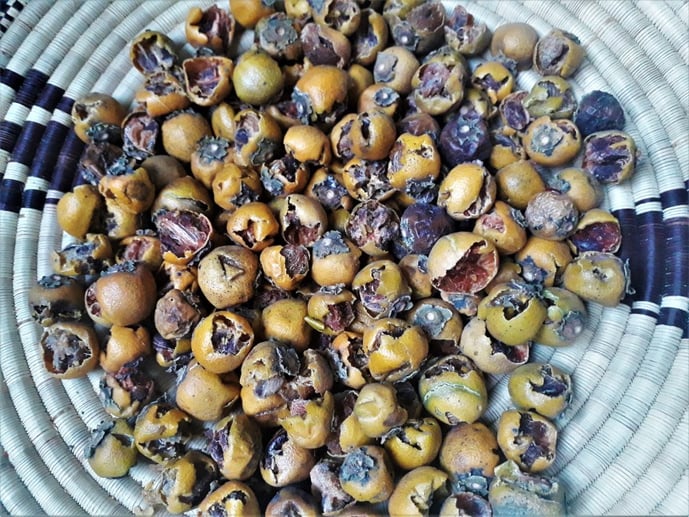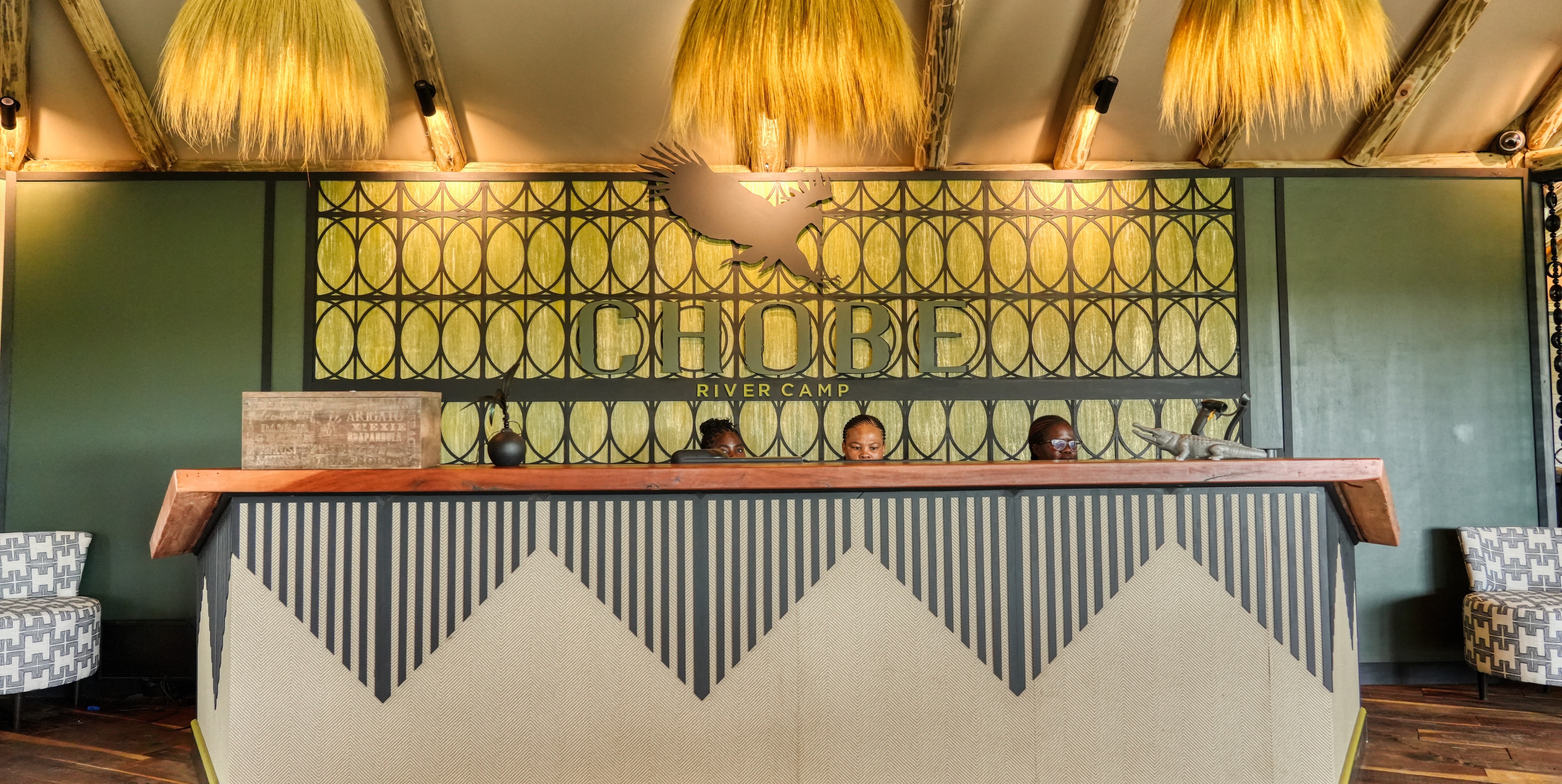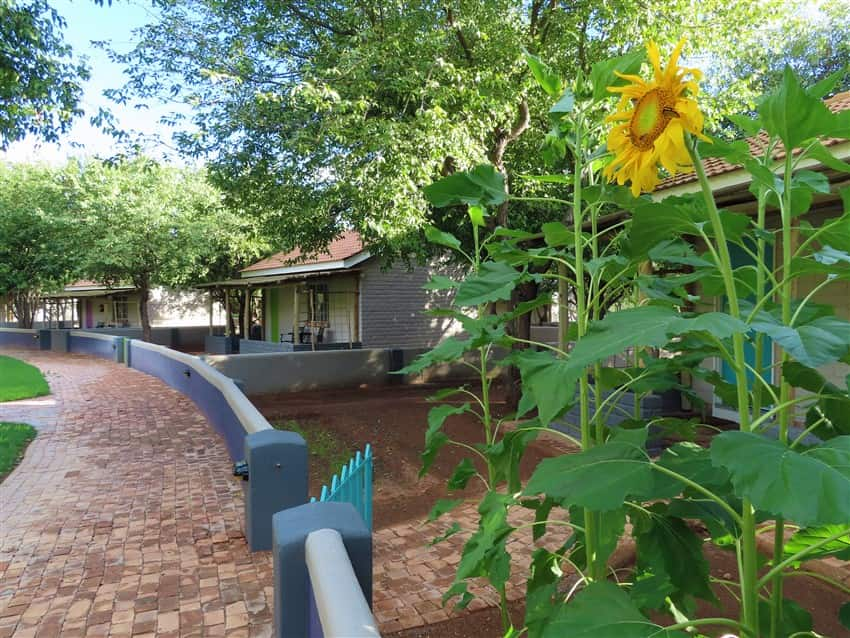Charmingly bedecking the savannas of northern Namibia is the Jackalberry tree, Diospyros mespiliformis. Omwandi is its local name in the northern regions of the country, and it is also referred to as African ebony.
It is an evergreen to deciduous tree as it sheds its leaves throughout the year but not all at once and grows up to 25 metres in height. The leaves have an elliptic shape with a striking glossy dark green colour on the top and pale green underneath. During autumn, the colours of these leaves transform into dark yellow, whilst in spring they turn stunningly flush red.
Small fragrant flowers also grow on the tree. Female flowers are found in solitary, and male flowers are found in clusters. Genders are on separate trees with the females bearing the delicious wild berry fruit (or locally called eenyandi). Fruits are formed between June and August and have an oval-like shape with a bristle tip and are spherical in appearance.
The fruit grows up to 25 millimetres in diameter and its outer skin changes from green and later to yellow when it becomes ripened. Its flesh is white, moist with an almost jelly-like texture when fresh, and has a sweet flavour.
This flesh eventually turns pink to reddish when dried… It is enjoyed fresh or dried to serve as a delightful sweet treat when out of season.
If you enjoy potent traditional drinks, this fruit is one of the ingredients in ombike, which is a traditional Aawambo brew worth a swig. Additionally, these fruits can also be used as a food additive to increase the nutritional value of food served to infants.
The wood of the Jackalberry tree is hard and strong, with a fine grain and is pale reddish-brown to almost black in colour. The wood is used to make selected furniture items.
During Namibia’s summer, the tree’s shade is a perfect haven to slip into that afternoon midday nap. And as the holiday season approaches, a Christmas tree in northern Namibia takes many forms in a Jackalberry tree’s branches and it definitely adds that Namibian flair!
Rights to Stefan Porembski
When travelling rom our Etosha Safari Camp to the regions in the central north close to Etosha King Nehale, you might encounter glimpses of the Jackalberry tree or its fruit being sold along the road or at open markets.
 Rights to Nela Shikemeni
Rights to Nela Shikemeni
Have you seen a Jackalberry tree? What are some of its other special uses? Let us know by sharing your story in the comment section below.
Author – I’m Nela, from Windhoek Namibia but born in a small village called Omatunda in northern Namibia. I am passionate about writing, research and photography, as it helps me gain knowledge about people and my country.







SUBMIT YOUR COMMENT